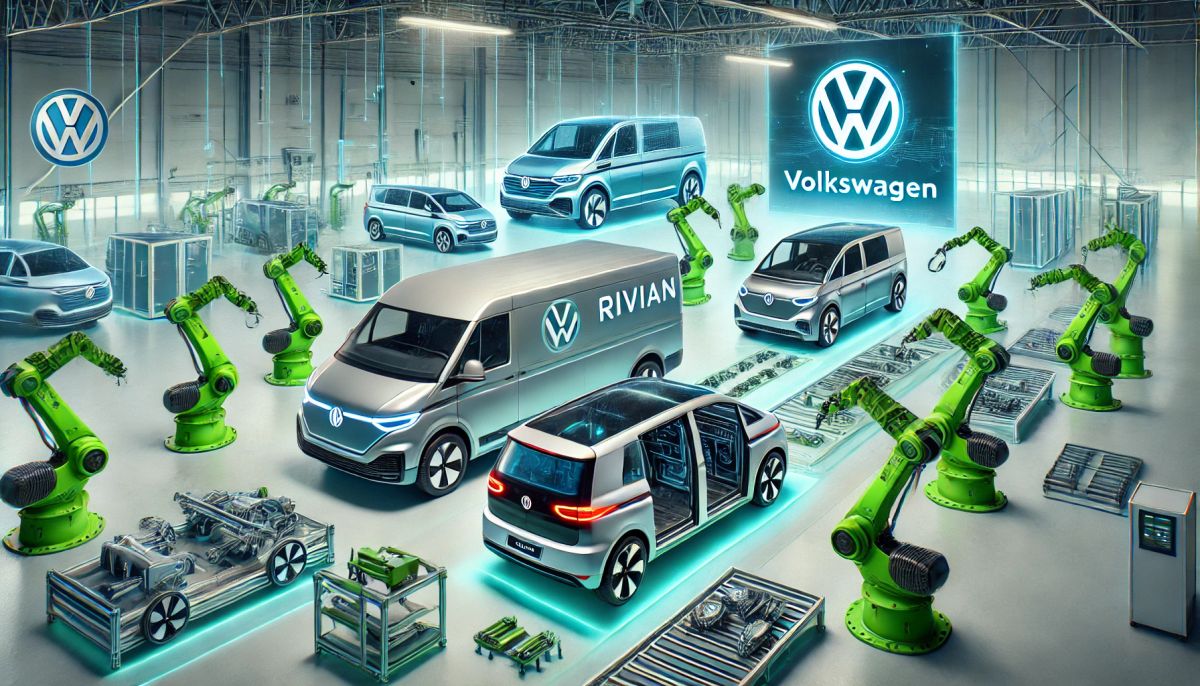Rivian’s Roadmap for a Brighter Future
Investors may have mixed feelings about Rivian (RIVN) for the year 2025, as the lack of major new vehicle launches may signal stagnation. However, beneath the surface, strategic partnerships, innovative technology, and expanding commercial ventures are laying the groundwork for a potential resurgence. Here’s why 2025 might turn out to be pivotal for Rivian.
Key Developments and Opportunities
1. A Groundbreaking Partnership with Volkswagen
One of the most significant developments for Rivian is its partnership with Volkswagen, cemented with a substantial investment of up to $5.8 billion. This collaboration aims to revolutionize the electric vehicle (EV) landscape by leveraging Rivian’s innovative software and electrical architecture.
What makes this partnership crucial is Rivian’s ability to offer a lighter and more efficient electrical system that drastically reduces wiring and overall vehicle weight—factors that enhance production efficiency and vehicle performance.
By optimizing manufacturing processes through advanced software solutions, Rivian is well-positioned to attract additional partnerships with other original equipment manufacturers (OEMs), giving it a potential competitive edge.
2. Expanding Commercial Success Beyond Amazon
Rivian’s electric delivery vans (EDVs) continue to be a driving force behind its market expansion. With a landmark contract to deliver 100,000 EDVs to Amazon by 2030, the company has already deployed over 20,000 vans, cementing its presence in the sustainable logistics sector.
In a promising move toward diversification, AT&T recently became Rivian’s first non-Amazon customer. The telecommunications giant initiated a trial program for Rivian’s EDVs, indicating broader market interest. This move paves the way for potential contracts with other major corporations looking to transition their delivery fleets to electric vehicles.
3. Innovations in Electrical Architecture
Rivian’s unique electrical architecture is gaining attention for its ability to simplify vehicle design by minimizing wiring, reducing weight, and streamlining production. This design innovation not only improves manufacturing efficiency but also enhances vehicle reliability and performance.
Multiple OEMs have expressed interest in adopting Rivian’s architecture, which could lead to additional licensing agreements and strategic collaborations.
4. Commitment to Sustainability and Emerging Market Trends
As sustainability continues to be a key focus in the automotive sector, Rivian’s commitment to producing greener, more efficient vehicles positions it well to capture future market trends. The company’s ability to innovate while maintaining environmental consciousness will likely drive demand for its products.
Why Investors Should Pay Attention
Despite a seemingly quiet year, Rivian’s strategic moves and technological advancements could significantly impact its valuation and market presence. Here’s what makes it worth watching:
- Market Diversification: The expansion beyond Amazon signals a promising shift toward broader commercial success.
- Technological Leadership: Rivian’s cutting-edge electrical architecture sets it apart from competitors.
- Strategic Partnerships: Collaborations with major players like Volkswagen offer financial backing and market validation.
Potential Challenges Ahead
While Rivian’s prospects are promising, it faces several challenges:
- Increasing Competition: Established automotive giants are rapidly entering the EV space.
- Supply Chain Disruptions: Ongoing global issues may affect production timelines.
- Continuous Innovation: Keeping pace with evolving technology and consumer expectations remains crucial.
Pricing and Market Insights
Rivian’s flagship models, the R1T and R1S, currently start at prices upwards of $70,000, reflecting their premium positioning. However, market conditions and competitive pressures could influence future pricing strategies.
With commercial vehicles like the EDVs gaining traction, Rivian may explore additional pricing models to accommodate fleet customers and expand its market share.
What’s Next for Rivian?
As the push for sustainable transport solutions continues, Rivian’s evolving partnerships and technological advancements position it as a key player in the electric vehicle market. The company’s focus on innovation, strategic collaborations, and market expansion efforts could unlock hidden opportunities in 2025.
Investors should keep a close eye on Rivian’s moves, as its current trajectory suggests a revitalized market position with potential surprises on the horizon.
Conclusion: A Year of Strategic Growth
While Rivian might appear to be idling in terms of new product launches, the underlying partnerships and technological innovations suggest a valuable growth trajectory. With expanding commercial ventures and significant investments, Rivian is steering toward a stronger market position in 2025.
Related FAQs
1. What makes Rivian’s electrical architecture unique?
Rivian’s streamlined design minimizes wiring and vehicle weight, improving both manufacturing efficiency and performance.
2. How important are Rivian’s partnerships with Volkswagen and Amazon?
These collaborations provide financial backing and market validation. Volkswagen’s investment supports Rivian’s scaling efforts, while Amazon’s contract highlights the demand for sustainable delivery solutions.
3. What are the potential challenges for Rivian in 2025 and beyond?
Challenges include heightened competition, supply chain issues, and the need for continuous innovation to maintain its competitive edge.
